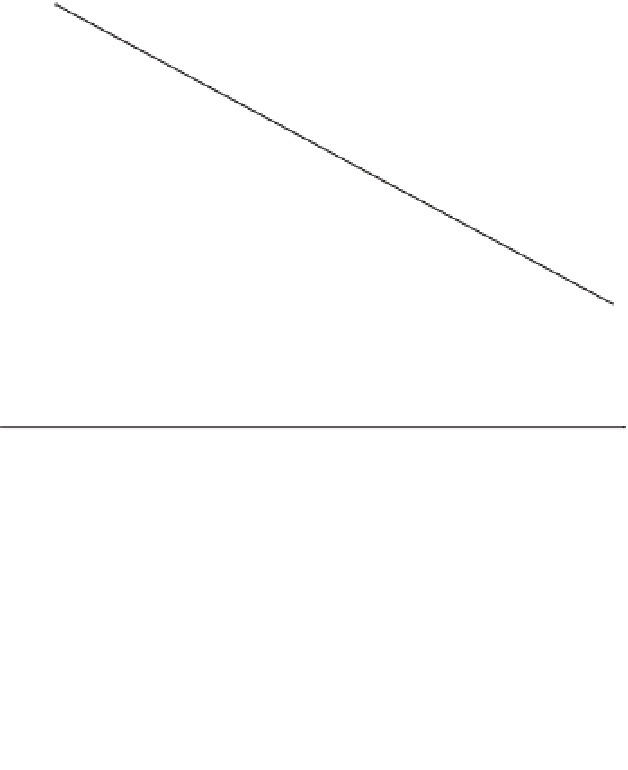Geoscience Reference
In-Depth Information
Drainage
10
2
Experimental data
Powerlaw relationship (exponent -1.72)
10
1
1
10
Event size (mV)
(a)
Imbibition
10
3
10
2
Figure 5.42
Frequency of electrical burst
for both drainage and imbibition versus
the magnitude of the events.
a)
In the case
of drainage, the data follow a power law
distribution with a fitting exponent of
−
10
1
Experimental data
Powerlaw relationship (exponent -2.02)
1.72.
b)
The imbibition data show a
drop-off that is much faster with
increasing event magnitude
because fewer numbers of pores are
involved in the formation of
Haines jumps.
10
0
0.1
1
Event size (mV)
(b)
fit exponent of
2.0 ± 0.4 (the seismic data of DiCarlo
et al. (2003) show an exponent of
−
because acoustic signals are typically on the order of
0.1 Pa (DiCarlo et al., 2003). With a typical streaming
coupling coefficient of
2.6 ± 0.4), which
overlaps with the data of DiCarlo. Additionally, our
results are comparable with the pressure fluctuations
modeled by Aker et al. (2000a, b). In the work of Aker
(2000), the pressure fluctuations have a power law distri-
bution during slow drainage with an exponent of
−
10
6
V/Pa for tap water, the order
of magnitude of the coseismic electrical signals would be
10
−
4
mV, much below the amplitude of the signals we
detected (above 0.1 mV). Additionally, the observed
impulses did not exhibit wavelet-like characteristics that
are typical of AE. Instead, the impulses exhibited charac-
teristics like the inset shown in Figure 5.40.
−
1.9. It
is interesting to note that the Haines jump phenomenon
works down to liquid helium temperatures, as shown by
Lilly et al
.
(1996). They observed avalanches in He4 at
temperatures of about 1.5 K.
Another possibility to explain the electrical fluctua-
tions we observed would be that the observed electrical
disturbances may result from a seismoelectric conversion
of the acoustic waves caused by the AE during the fluid
movement processes. This possibility can be dismissed,
−
5.5 Small-scale experiment in the field
A small-scale field experiment was devised to localize the
source of a near-surface water injection pulse into an
unconsolidated soil.








































































































































































































































